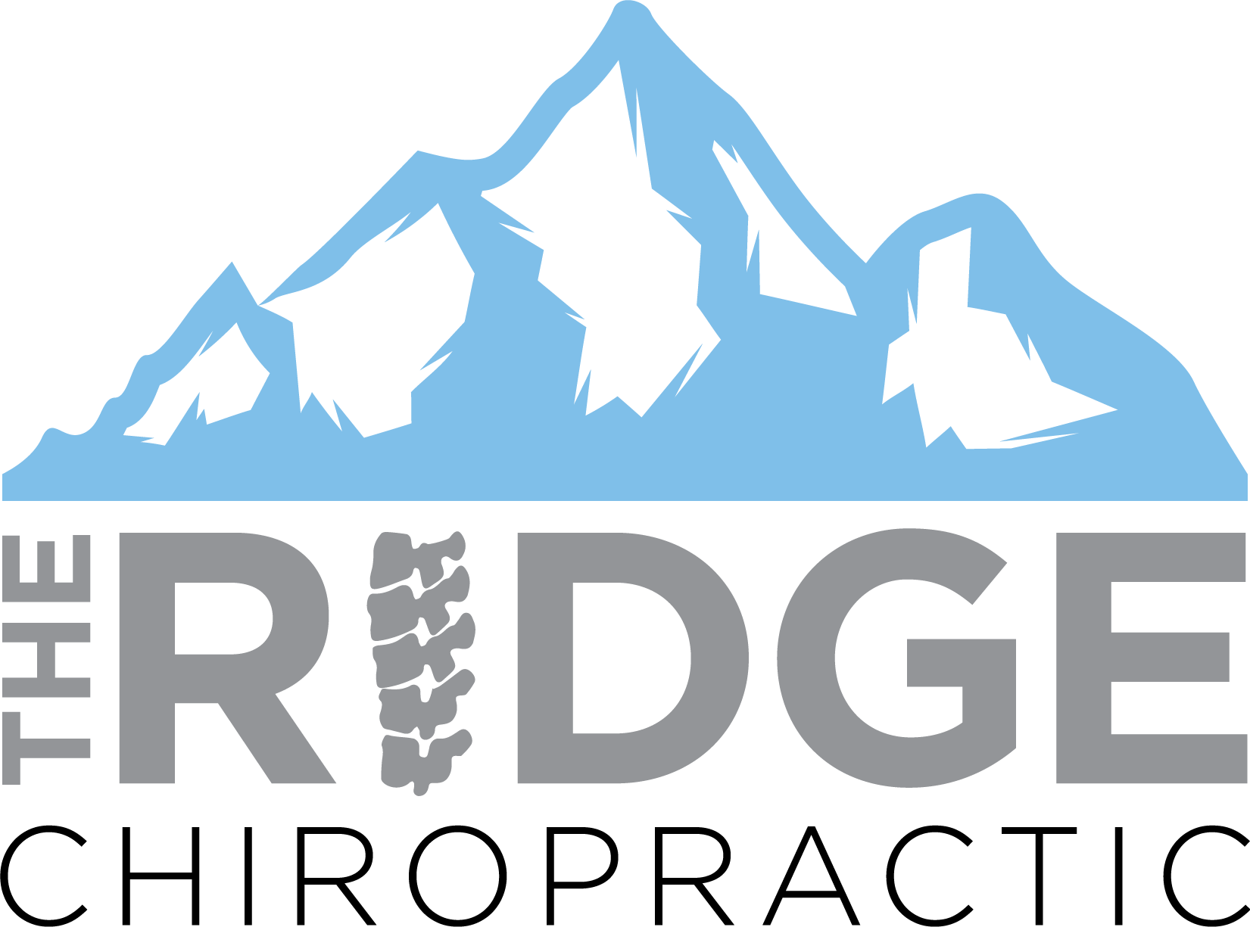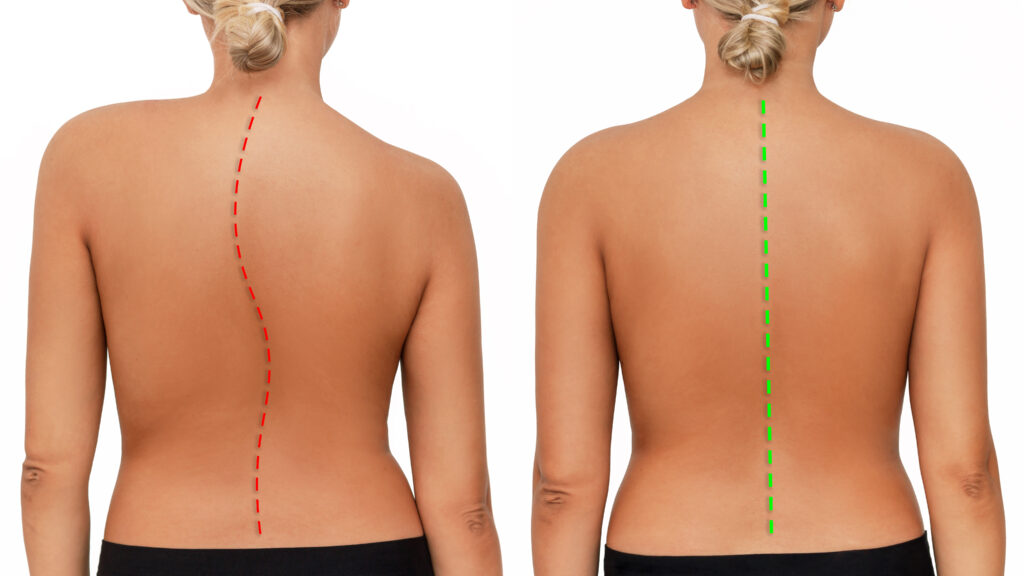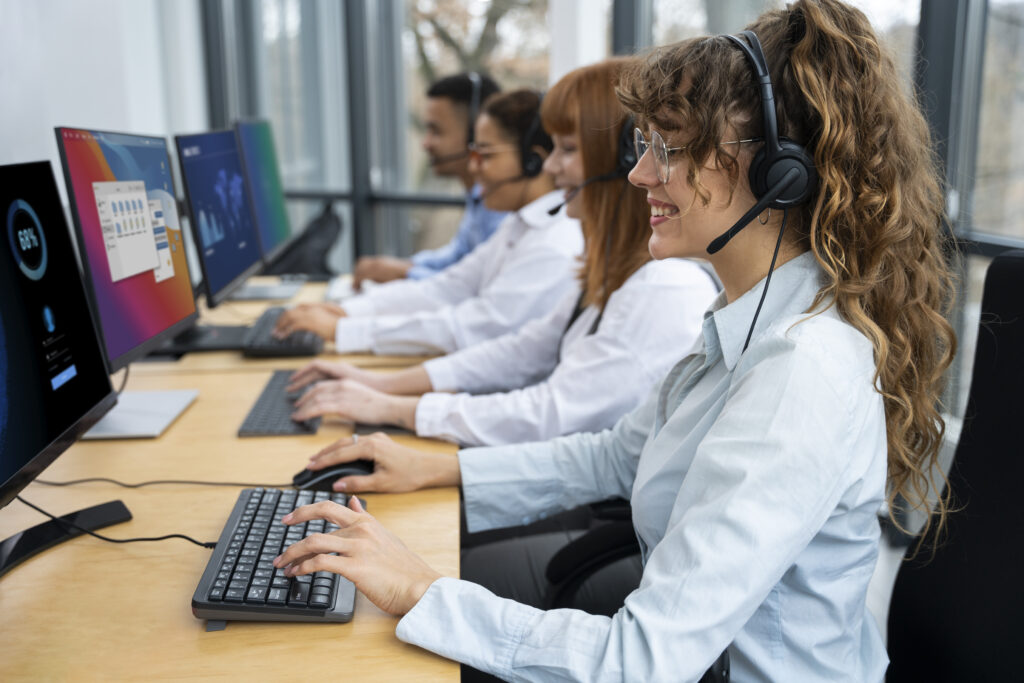Scoliosis is a complex spinal condition characterized by a sideways curvature of the spine. It can occur at any age but is most commonly diagnosed in adolescents. While scoliosis can be congenital or develop as a result of certain neuromuscular conditions, the majority of cases are idiopathic, meaning their cause is unknown.
Regardless of its origin, scoliosis can have a profound effect on posture. While some people with scoliosis may not have any noticeable symptoms, others might experience pain, difficulty with certain activities, and a noticeable curvature in their spine. A well-aligned posture can significantly benefit those with scoliosis, as it can help alleviate some of these symptoms.
One of the critical factors in managing scoliosis effectively is maintaining good posture. Proper posture is not only essential for individuals with scoliosis but for everyone seeking to promote a healthy spine. In this blog post, we will delve into the intricate relationship between scoliosis and posture, exploring how they are interconnected and why paying attention to posture is crucial for those with scoliosis.
What is Scoliosis?
Scoliosis is a medical condition characterized by an abnormal lateral (side-to-side) curvature of the spine,often resembling an “S” or a “C” shape when viewed from the back. This condition can develop at any age, but it most commonly appears during adolescence. While scoliosis varies in severity, it can have a significant impact on an individual’s spinal health and overall well-being.
The severity of scoliosis can vary, with some individuals experiencing mild curvature that requires no treatment, while others may develop more significant curves that can lead to pain, discomfort, and potential health complications. Early detection and appropriate management, including physical therapy, bracing, or surgery in severe cases, are essential to address scoliosis and prevent its progression.
Common Causes of Scoliosis in Columbia
Scoliosis can have various causes, and understanding these underlying factors is crucial for effective management. Here are some common causes of scoliosis:
- Idiopathic Scoliosis: This is the most prevalent type and often develops during adolescence, with no identifiable cause. It’s further categorized into subtypes:
- Adolescent Idiopathic Scoliosis (AIS): Occurs in individuals aged 10 to 18 and is more common in girls than boys.
- Juvenile Idiopathic Scoliosis (JIS): Develops in children aged 3 to 10.
- Infantile Idiopathic Scoliosis (IIS): Rare, appearing in infants under 3 years old.
- Congenital Scoliosis: This type of scoliosis is present at birth and results from abnormal spinal development in the womb.
- Neuromuscular Scoliosis: It occurs as a secondary condition in individuals with neuromuscular disorders like cerebral palsy, muscular dystrophy, or spinal cord injuries. Weak or imbalanced muscles can lead to spinal curvature.
- Degenerative Scoliosis: Often seen in older adults, this type of scoliosis develops due to the natural degeneration of the spine’s discs and joints. As these structures deteriorate, the spine may curve abnormally.
- Traumatic Scoliosis: Spinal injuries or trauma, such as fractures or dislocations, can result in scoliosis if they disrupt the spine’s alignment.
- Syndromic Scoliosis: Some genetic syndromes, like Marfan syndrome or Ehlers-Danlos syndrome, can lead to scoliosis as one of their associated symptoms.
The Link Between Scoliosis and Posture
Scoliosis is a medical condition characterized by an abnormal, sideways curvature of the spine. It’s a multifaceted condition that affects individuals differently. One of the key areas impacted by scoliosis is posture. The way we stand, sit, and move is deeply interconnected with the alignment of our spine. Here, we’ll delve into how scoliosis can affect posture and the challenges it poses to individuals striving to maintain good posture.
How Scoliosis Affects Posture
- Uneven Shoulders and Hips: One of the most noticeable effects of scoliosis on posture is the unevenness of the shoulders and hips. One shoulder may appear higher than the other, and similarly, one hip might be more elevated. This is due to the lateral curvature pulling the body out of alignment.
- Prominent Rib Hump: In cases of thoracic scoliosis (a curve in the upper back), the rotation of the vertebrae can push the ribs out on one side, leading to a noticeable rib hump. This can cause an asymmetric appearance when viewed from the back.
- Forward Head Posture: Due to the curvature of the spine, individuals might compensate by jutting their head forward to maintain balance.
- Altered Gait: Scoliosis can also affect the way an individual walks. There might be an uneven distribution of weight, causing an irregular gait.
- Pelvic Tilt: The abnormal spinal curve can lead to a tilt in the pelvis. This can further affect posture and the way an individual stands or walks.
Challenges in Maintaining Good Posture
- Constant Compensation: Individuals with scoliosis often have to make continuous adjustments to find a position that feels comfortable or balanced. This constant compensation can make maintaining a ‘standard’ posture difficult.
- Muscle Imbalance: Scoliosis can result in muscle imbalances where certain muscle groups are overstrained while others become weak. Over time, this can lead to chronic pain and further postural deviations.
- Fatigue: Due to the constant effort needed to maintain a straight posture, individuals with scoliosis may experience faster fatigue, especially in the back muscles.
- Pain and Discomfort: Maintaining an upright posture can sometimes exacerbate pain or discomfort for those with scoliosis. This might lead them to adopt other postures that provide temporary relief but are not necessarily beneficial in the long run.
- Misunderstanding and Lack of Awareness: There’s often a lack of understanding about scoliosis in general society. Individuals might be advised to “stand up straight” without recognizing the challenges and complexities of the condition.
- Psychological Factors: The visible signs of scoliosis can sometimes lead to self-consciousness or lowered self-esteem. This might cause some individuals to adopt certain postures to hide or minimize their spinal curve.
Tips for Maintaining Healthy Posture with Scoliosis in Columbia
Maintaining healthy posture with scoliosis is essential to minimize discomfort and prevent the condition from worsening. Here are some practical tips to help individuals with scoliosis improve their posture:
- Ergonomic Workspace Setup:
If you have a desk job or spend long hours working on a computer, ensure your workspace is ergonomically designed. Adjust your chair, desk, and computer monitor to the correct height and distance to promote good posture.
- Proper Sitting and Standing Techniques:
When sitting, keep both feet flat on the floor and maintain a slight arch in your lower back. Use a chair with good lumbar support, and sit all the way back in the chair. When standing, distribute your weight evenly between both feet. Avoid locking your knees or arching your back excessively.
- Exercises and Stretches:
Personalized exercise and stretching routine tailored to your specific scoliosis. Strengthening the muscles around your spine and improving flexibility can help support better posture. Incorporate exercises that focus on core strength, back muscles, and postural muscles. Yoga and Pilates can be beneficial for scoliosis.
- Using Posture-Correcting Aids or Braces:
If your healthcare professional recommends it, consider wearing a posture-correcting brace. These devices can provide support and help maintain a more aligned spine, especially during periods of growth for adolescents with scoliosis.
- Regular Breaks and Movement:
If you sit for long periods, take regular breaks to stand, stretch, and walk around. This can help relieve muscle tension and prevent slouching.
- Comfortable Footwear:
Choose shoes with proper arch support and cushioning to help distribute your weight evenly while standing or walking.

- Sleeping Position:
Ensure your mattress and pillows provide adequate support for your spine. Some individuals with scoliosis find it comfortable to sleep with a pillow placed between their knees to support the natural curvature of the spine.
- Maintain a Healthy Lifestyle:
Eating a balanced diet and maintaining a healthy weight can reduce the strain on your spine and help you manage scoliosis more effectively.
Chiropractic Care for Posture and Scoliosis in Columbia
Chiropractic care is a form of alternative medicine that focuses on diagnosing and treating mechanical disorders of the musculoskeletal system, particularly the spine. For individuals with scoliosis, chiropractic care at The Ridge Chiropractic in Columbia offers a non-invasive method to address some of the posture challenges associated with the condition. Here’s an in-depth look into how chiropractic adjustments can help these individuals and the role chiropractors play in this process.
How Chiropractic Adjustments Can Help
Pain Relief: Misalignments in the spine due to scoliosis can result in nerve irritation and muscle tension. Chiropractic adjustments can help in relieving these pinched nerves, subsequently reducing pain.
Improved Mobility: Scoliosis can restrict spinal mobility. Chiropractic adjustments can increase the range of motion in the spine, making movement smoother and less painful.
Muscle Relaxation: Chiropractors often combine adjustments with other therapies, such as electrical stimulation or heat therapy, which help in relaxing the muscles. Relaxed muscles can support the spine better and reduce the asymmetrical pull that exacerbates scoliotic curves.
Postural Improvement: Regular chiropractic care can assist in correcting postural imbalances that result from scoliosis. This not only impacts the appearance but also the function of the spine.
Improved Balance and Coordination: By addressing spinal misalignments and providing exercises and therapies to strengthen the back, chiropractic care can improve an individual’s balance and coordination.

Role of a Chiropractor in Assessing and Addressing Spinal Misalignments
Detailed Assessment: Before any treatment, a chiropractor will perform a thorough evaluation. This includes a visual assessment of posture, a range of motion tests, neurological exams, and often X-rays or other imaging to understand the precise nature and degree of the scoliosis.
Customized Treatment Plans: Every scoliosis case is unique. A chiropractor will design a customized treatment plan tailored to the individual’s specific curvature and symptoms.
Hands-On Adjustments: Chiropractors are trained to use their hands to apply controlled, specific force to spinal joints that are misaligned. These adjustments aim to bring the spine back to its natural alignment, or as close as possible, given the structural constraints of scoliosis.
Guidance on Home Care: In addition to in-office treatments, chiropractors often provide patients with exercises and stretches to do at home. These exercises can help in maintaining spinal flexibility and strength.
Regular Monitoring: Scoliosis is a condition that can change over time, especially in growing adolescents. Chiropractors will regularly reassess spinal alignment and adjust the treatment plan as necessary.
Holistic Approach: Many chiropractors take a holistic approach to care, providing advice on nutrition, lifestyle, and ergonomics, all of which can impact spinal health and overall well-being.
Scoliosis, Posture and Chiropractic Care in Columbia
In conclusion, prioritizing good posture and spinal health is crucial for individuals living with scoliosis. At The Ridge Chiropractic, we understand the importance of spinal well-being, and we’re here to support you on your journey to a healthier, more comfortable life. If you have questions or need personalized guidance, please don’t hesitate to reach out to us at (270) 380-1713. Your spine deserves the best care, and together, we can make a positive impact on your posture and overall quality of life.





